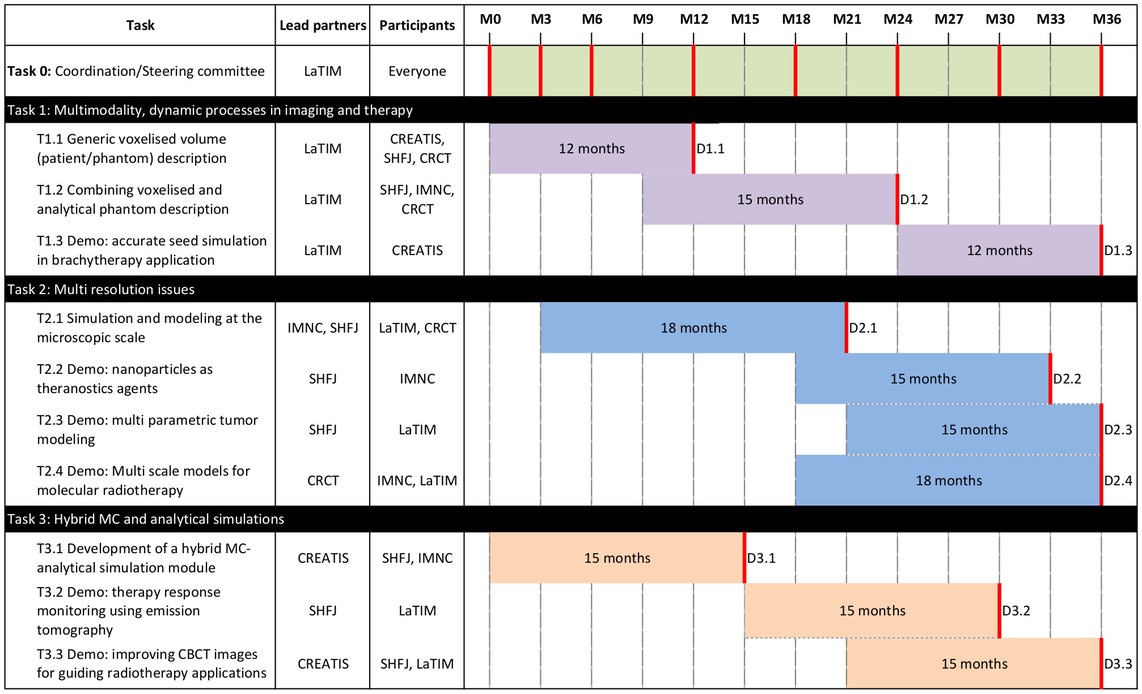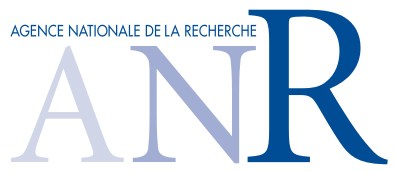Welcome to the ANR t-GATE project
The theranostics concept, defined as a therapeutic strategy (e.g. chemotherapy, hyperthermia, photodynamic, radiation therapy) combined with one or more in-vivo imaging modalities (e.g. PET, SPECT, CT, MRI), is a current trend towards achieving personalized medicine. A growing number of techniques and protocols involve significant interactions and feedback between imaging and therapy, for example the use of imaging to guide and monitor response to therapy. There is currently no integrated software platform allowing for the in-silico simulation of such theranostic scenarios that could help in designing, optimizing, testing and validating such protocols targeting different clinical applications. The overall objective of this project is to provide solutions in rupture with current state-of-the-art, allowing for the development of such a unique simulation platform. The proposed developments will i) facilitate the creation of links between different types of simulation and modeling such as Monte Carlo (MC) and analytical ones, ii) covering a large range of theranostics applications across several imaging modalities and therapeutic regimes, iii) at different spatial and temporal resolution scales, iv) within a computationally efficient framework.
Different major methodological challenges will be addressed during the course of this project. These include the ability to model truly multimodal imaging and therapy protocols and their interactions within the same modeling framework, accounting for the simulation of dynamic processes. The second challenge to be addressed is that of the different resolution associated with the imaging modalities used to guide therapy (mostly at the millimetric scale) and the effects of therapy (mostly at the level of micrometric and sub-micrometric scale). Finally, the proposed platform has to be computationally efficient which can not only be based on hardware acceleration solutions but also on the development of hybrid modeling approaches combining MC and analytical simulations within the same platform. All these methodological developments will be validated through different theranostic protocol demonstrators that are either currently in clinical practice or under development and/or evaluation for future clinical use.
The proposed integrative platform will be developed based on the already popular GATE MC simulation platform in order to benefit from the existing capabilities to simulate different imaging modalities, therapeutic regimes, and the large selection of the underlying Geant4 physics process libraries. The different teams involved have substantial experience in the development of simulations for multi-modality imaging and therapy applications and can lead with success this project, whose final aim is the development of the first ever theranostics in-silico modeling platform.
Coordination and partners
PI: Dimitris Visvikis, LaTIM INSERM UMR1101, Brest.
Laboratoire de Traitement de l’Information Médicale (LaTIM), INSERM UMR1101, Brest:
Yannick Lemaréchal, Julien Bert, Dimitris Visvikis
Centre de Recherche en Acquisition et Traitement de l’Image pour la Santé (CREATIS), CNRS UMR5220, Lyon:
Thomas Cajgfinger, Claire Mouton, David Sarrut
Commissariat à l’Energie Atomique et aux Energies Alternatives (CEA), I2BM/SHFJ, IMIV, Orsay:
Vesna Cuplov, Simon Stute, Claude Comtat, Sébastien Jean, Irène Buvat
Imagerie et Modélisation en Neurobiologie et Cancérologie (IMNC), CNRS UMR1240, Orsay:
Albertine Dubois
Centre de Recherches en Cancérologie de Toulouse (CRCT), INSERM U1037, Toulouse:
Sara Marcatili, Manuel Bardiès
Tasks Schedule

Acknowledgement
This work is funded by the French National Research Agency (ANR-14-CE23-0008)
